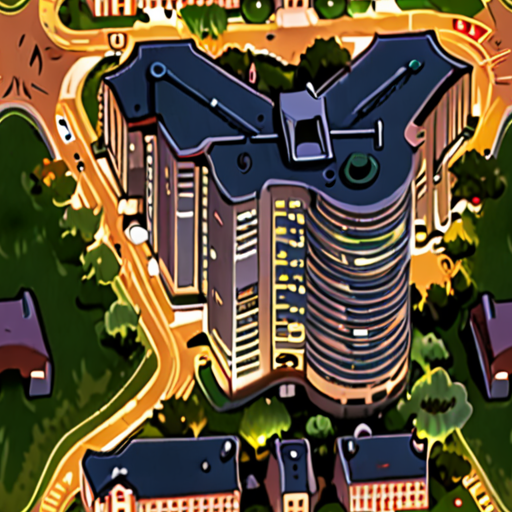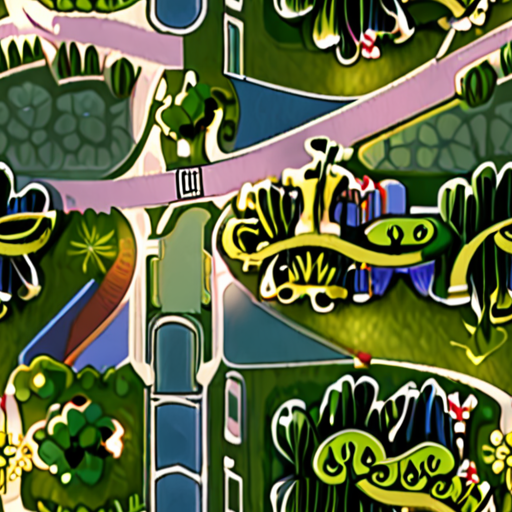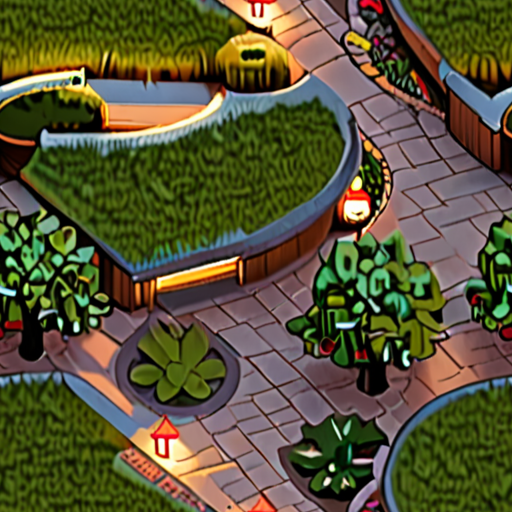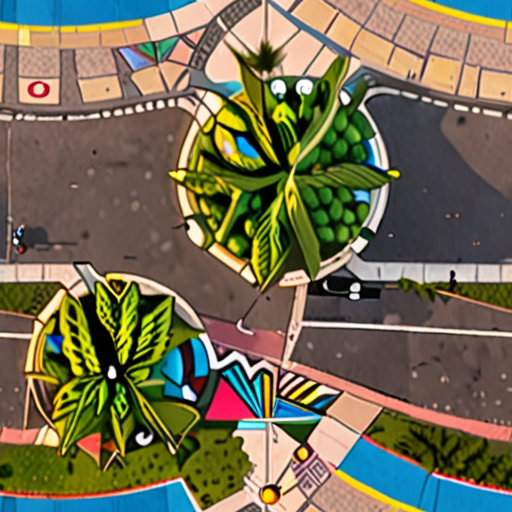Creating vibrant and functional public areas has become increasingly important in modern urban planning, as it directly impacts the quality of life for citizens. Designing open spaces, which encompasses both physical environments and social interactions, requires careful consideration of various factors to achieve its full potential. From urban spaces design to green spaces examples, understanding the intricacies involved in crafting these areas can lead to improved community engagement, economic growth, and overall well-being.

Designing Open Spaces
We believe that designing open spaces requires careful consideration of several factors, including functionality, aesthetics, and user experience.
- Define the Purpose
- Assess the Site
- Create a Layout
- Select Furniture and Fixtures
- Add Amenities
- Consider Lighting
- Integrate Technology
- Maintain and Update
Determine how the open space will be used and what activities will take place there. This will help guide decisions on layout, furniture, and amenities.
Consider the natural surroundings, climate, and topography of the site. This will inform decisions on materials, landscaping, and outdoor features.
Develop a floor plan that balances circulation paths, seating areas, and activity zones. Consider the “traffic flow” through the space and leave enough room for people to move comfortably.
Choose furniture and fixtures that are durable, comfortable, and easy to clean. Consider using sustainable materials and energy-efficient lighting.
Incorporate amenities such as water features, planters, and art installations to enhance the aesthetic appeal of the space.
Use a combination of overhead lighting, task lighting, and ambient lighting to create a welcoming atmosphere and highlight key features.
Consider incorporating technology such as Wi-Fi, charging stations, and digital signage to enhance the user experience.
Regularly inspect and maintain the space to ensure it remains safe, clean, and functional. Make updates as needed to keep the space fresh and inviting.
By following these guidelines, you can create an open space that is both functional and aesthetically pleasing, providing a positive experience for users.
Elements of Design Open Space
We’ll explore the essential components of open spaces, which contribute to their functionality and aesthetic appeal.
- Connected Pathways
- Site Furniture
- Appropriate Lighting
- Waste Receptacles
- Clearly Defined Edges
- Orientations for Sunlight and Wind Protection
These pathways facilitate navigation through the open space, promoting accessibility and usability.
This includes seating areas, tables, and other amenities that enhance the comfort and enjoyment of the space.
A well-designed lighting scheme can greatly impact the ambiance and functionality of the open space.
Convenient placement of waste receptacles helps maintain cleanliness and hygiene in the open space.
Clear boundaries define the open space, separating it from adjacent areas and preventing visual clutter.
Strategic orientations can maximize natural light and minimize harsh wind conditions, creating a more pleasant environment.
By incorporating these elements, designers can create functional and inviting open spaces that cater to various needs and preferences.
At Peck and Gartner , we understand the importance of thoughtful design in shaping our surroundings.
Our expertise in home improvement and interior design enables us to provide valuable insights and practical advice for transforming your living spaces.
Whether you’re seeking to renovate your entire home or simply refresh a particular area, our resources and inspiration can guide you toward achieving your desired outcome.
For more information on designing effective open spaces, visit our dedicated page on Open Spaces Design .
Additionally, learn how to incorporate sustainable design principles into your projects by exploring our article on Sustainable Design Principles .
Discover the benefits of smart home technology and its applications in residential design on our page Smart Home Technology .

Examples of Open Spaces
We often take for granted the importance of open spaces in our daily lives, but these areas play a vital role in providing us with opportunities for recreation, relaxation, and socialization.
- Parks: These green oases offer a peaceful escape from the hustle and bustle of city life, providing a place for picnics, walks, and outdoor activities.
- Gardens: Whether small and intimate or large and sprawling, gardens bring beauty and tranquility to urban landscapes, serving as a haven for nature lovers and those seeking solace.
- Public Beaches: With their soothing sounds of waves and warm sand beneath our feet, public beaches invite us to unwind, engage in water sports, or simply bask in the sun.
In addition to these popular options, there are many other types of open spaces worth exploring, such as:
- Riverbanks and Waterfronts: These scenic areas offer breathtaking views, opportunities for fishing and boating, and a chance to connect with nature.
- Playgrounds: Designed for kids and kids-at-heart, playgrounds provide a fun and interactive environment for physical activity, socialization, and creative expression.
- Squares and Plazas: Often located in the heart of cities, these vibrant public spaces host events, markets, and community gatherings, fostering a sense of connection and belonging among residents.
As we continue to urbanize and develop our surroundings, it’s essential to prioritize the creation and preservation of open spaces, recognizing their value in promoting well-being, community engagement, and environmental sustainability.

What is Public Space Design?
Public space design plays a vital role in shaping the character and functionality of urban environments.
- These areas serve as hubs for social interaction, cultural exchange, and community engagement
- Effective public space design encourages inclusivity, wellbeing, and civic participation
- By incorporating thoughtful design principles, public spaces can foster a sense of community and belonging among residents
- Well-designed public spaces can also contribute to economic growth and revitalization efforts
Key Elements of Public Space Design
The following elements are essential considerations in public space design:
- Social Interactions : Incorporating seating areas, pedestrian paths, and gathering spaces to facilitate social interactions
- Cultural Exchange : Integrating public art installations, cultural events, and programming to promote cross-cultural understanding
- Inclusivity : Ensuring accessibility features, such as ramps, elevators, and accessible restrooms, to accommodate diverse needs
- Wellbeing : Incorporating green spaces, water features, and other calming elements to promote mental health and relaxation
- Civic Participation : Designing spaces that encourage community involvement, such as public forums, voting stations, and community gardens
Best Practices for Public Space Design
To create effective public spaces, consider the following best practices:
- Community Engagement : Involve local stakeholders and residents in the design process to ensure that public spaces meet community needs
- Contextual Design : Consider the surrounding environment, climate, and culture when designing public spaces
- Flexibility : Design public spaces that can adapt to changing community needs and uses
- Maintenance : Prioritize maintenance and upkeep to ensure public spaces remain safe and inviting
Real-World Examples of Successful Public Space Design
Several cities have successfully implemented public space design initiatives that have improved the quality of life for residents:
- New York City’s High Line: A former elevated rail line transformed into a vibrant public park
- Barcelona’s La Rambla: A pedestrianized street lined with cafes, shops, and street performers
- Vancouver’s Granville Island: A public market and shopping district surrounded by parks and waterfront views
Conclusion
Public space design has the power to shape the character and functionality of urban environments, fostering social interaction, cultural exchange, and community engagement.
Design Elements of Public Areas
We’ll explore four essential design elements that contribute to the creation of inviting and functional public spaces.
- Theme
- Active Transportation
- Gateway and Signage
- Amenities
A well-defined theme sets the tone and character of a public area, influencing how people interact and engage with the space. Effective themes can evoke emotions, spark imagination, and foster a sense of community. Consider incorporating local culture, history, or environmental features into your design to create a unique and authentic atmosphere.
Incorporating pedestrian-friendly infrastructure, bike lanes, and accessible pathways encourages physical activity, reduces congestion, and promotes sustainable transportation options. By prioritizing active transportation, you can create a safe and enjoyable environment for residents and visitors alike.
Clear and effective signage helps guide visitors through the public area, providing essential information about amenities, services, and attractions. Gateway features, such as iconic landmarks or striking architectural elements, can serve as visual anchors, defining the space and setting expectations for what lies ahead.
A variety of amenities, including seating areas, public art installations, and recreational facilities, enrich the public area experience. These features encourage social interaction, relaxation, and exploration, making the space feel welcoming and inclusive. Consider incorporating amenities that cater to diverse needs and interests to ensure broad appeal.

What is a Public Space Designer?
A public space designer is responsible for creating and revitalizing public areas that foster community engagement, social interaction, and aesthetic appeal. These professionals combine expertise in urban planning, architecture, landscape design, and sociology to develop spaces that meet the needs of diverse populations.
Key Responsibilities
- Conducting site analyses to identify opportunities for improvement and potential challenges
- Collaborating with stakeholders, including local residents, businesses, and government agencies
- Developing designs that balance functionality, sustainability, and aesthetics
- Overseeing construction and maintenance processes to ensure successful implementation
- Evaluating the impact of public spaces on community dynamics and making adjustments as needed
Skills and Qualifications
- Strong understanding of urban planning principles and theories
- Proficiency in design software, such as AutoCAD and SketchUp
- Excellent communication and project management skills
- Able to work effectively with diverse stakeholders and communities
- Familiarity with local building codes and regulations
Education and Training
Public space designers typically hold a degree in a field such as urban planning, architecture, landscape architecture, or environmental design. Many also pursue certifications or advanced degrees to stay current with industry developments and best practices.
Industry Trends and Best Practices
Some notable trends in public space design include:
- Incorporating green infrastructure and sustainable materials
- Designing spaces that accommodate diverse abilities and age groups
- Integrating technology, such as smart lighting and Wi-Fi connectivity
- Fostering community engagement through public art and programming
Conclusion
As a public space designer, one plays a vital role in shaping the character and livability of cities and towns. By combining technical expertise with a deep understanding of human behavior and community needs, these professionals can create public spaces that promote social cohesion, economic vitality, and environmental stewardship.

0 Comments